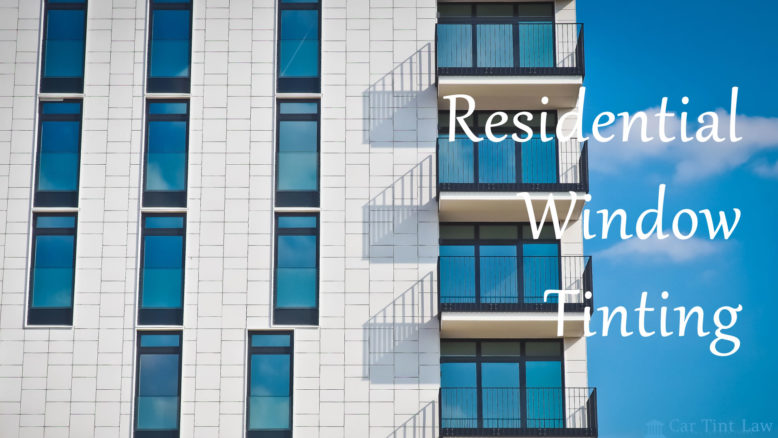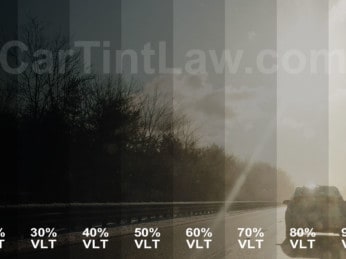Homeowners are always looking for ways to make their homes more energy-efficient and comfortable, and residential window tinting is becoming an increasingly popular option. Window tinting offers a range of benefits and can be a great way to reduce energy costs, improve the appearance of your home, and increase the privacy of your living space.
In this article, we’ll discuss the many benefits of residential window tinting, and everything you need to know to make an informed decision. From the types of tints available, to the cost and installation process, this guide will provide the information you need to decide if window tinting is right for your home.
Benefits of residential window tinting
Window tinting can help improve your home in many different ways, including increasing comfort and energy efficiency, increasing privacy, and improving the appearance of your home. Let’s take a look at each of these benefits in more detail below.
Increased comfort – Residential window tinting is especially helpful in the summer when you need to keep your house cool. Tinted windows prevent UV rays from entering your home, which can otherwise cause damage to furnishings, reduce air quality, and increase your energy costs. Depending on the type of tinting you choose, it can also help reduce noise from the outside, making your home a more comfortable environment.
Increased energy efficiency – Beyond the aesthetic benefits of tinting, it can also help reduce energy costs. Different types of tinting can help block out different amounts of light and UV rays, and can be used in a variety of different applications (more on that below). Residential tinted windows can be a great way to reduce your air conditioner energy usage, especially in the summer months when cooling your home is important.
Improved appearance – Some homeowners choose window tinting for aesthetic reasons, or to improve the appearance of their home. Window tinting can also be a great way to ensure privacy in your home, especially if your windows are visible from a street or sidewalk. Beyond privacy, window tinting can be a great way to make your house look better from the outside, which can be especially important if you live in a neighborhood with strict home appearance rules.
Things to consider with residential window tinting
Beyond the many benefits of residential window tinting, there are also a wide range of different types of tints available. Depending on the type and features of tinting film you choose, it can help increase energy efficiency, improve comfort, and improve the appearance of your home. Let’s take a look at the most important aspects to consider when choosing tinting film.
1. Visible light transmission (VLT)
The percentage of light that is allowed to pass through a tint is referred to as visible light transmission (VLT). All tinting will block 100% of UV light, but the amount of visible light that passes through the film will differ depending on the percentage of VLT indicated on the tinting product label.
The lower the percentage of VLT, the darker the tint will be. The top range of VLT percentages is usually around 50%, but the most common range is between 35% and 50%.
2. Solar heat gain coefficient (SHGC)
This measures how well a tint is at blocking heat from the sun. It’s measured on a scale between 0 and 1. Zero means the material is fully transparent and allows all the sun’s heat to enter a space; whereas 1 means it’s fully opaque and blocks all the sun’s heat from entering a space.
For residential window tinting, typical SHGC values can vary depending on the type of window tint and the desired level of heat reduction. On average, residential window tints typically have SHGC values ranging from 0.2 to 0.5. Here’s a general guide to SHGC values for different types of window tinting:
- Clear Tints: These tints are designed to provide minimal change to the appearance of the window while offering some heat reduction. Their SHGC values might range from 0.4 to 0.5.
- Traditional Reflective Tints: Reflective tints often have higher SHGC values, ranging from 0.2 to 0.4. They are more effective at reducing heat but may have a more noticeable reflective appearance.
- Ceramic and Spectrally Selective Tints: These advanced tints are designed to offer significant heat reduction while maintaining a clear or neutral appearance. Their SHGC values might be in the range of 0.2 to 0.4 or even lower.
3. Energy saving (ESH)
This is a measure of how much energy a window tint is at blocking. Lower numbers are better, so if a tint has a high ESH, it’s blocking a lot of energy from entering your home.
Energy Saving (ESH) values for residential window tint can vary based on the type and quality of the tint, as well as factors such as the window’s size, orientation, and local climate. ESH values are typically associated with the Solar Heat Gain Coefficient (SHGC) and U-factor of the window tint, which determine its ability to block heat and provide insulation.
Generally, residential window tints with higher quality and advanced technology tend to have better energy-saving properties. Here’s a rough guideline for ESH values based on the SHGC and U-factor:
- Good Energy Savings: ESH values for residential window tints with moderate energy-saving benefits might range from 0.30 to 0.50. These tints provide a noticeable reduction in solar heat gain and can help improve energy efficiency.
- Better Energy Savings: More advanced window tints with higher quality materials and better technology can achieve ESH values in the range of 0.20 to 0.30. These tints offer significant energy savings and can greatly reduce heat transfer through the windows.
- Best Energy Savings: The highest-quality residential window tints, such as those with ceramic or spectrally selective coatings, may achieve ESH values below 0.20. These tints provide exceptional energy savings, UV protection, and glare reduction.
It’s important to note that ESH values are not standardized and can vary depending on the manufacturer and specific product. When considering window tint for energy savings, it’s recommended to look for products that are certified by reputable organizations, such as the National Fenestration Rating Council (NFRC) in the United States. The NFRC provides performance ratings for windows, doors, and skylights, including information about SHGC, U-factor, and visible light transmission.
Cost of residential window tinting
While the exact price will vary depending on the type of window tinting you choose, residential window tinting is often less expensive than other energy-saving options such as new insulation or a new HVAC system.
Many homeowners prefer to get their window tinting done professionally, which will likely cost more than doing it yourself, but there are some DIY kits available. Be sure to factor in the cost of any tools and materials you need, as well as the time you’ll spend doing the installation, and you’ll have a better idea of the overall cost.
If you decide to get your residential tinting done by a professional, expect to pay anywhere from $100 to $450 per window. The average cost is $220 per window, but the price can vary depending on the size and placement of your windows.
Keep in mind, the cost of residential window tinting is a one-time investment that will pay for itself through energy savings in the long run.
Installation process for residential window tinting
Depending on the type of window tinting you choose, you can either install it yourself or hire a professional to do it for you. If you decide to do residential window tinting yourself, you’ll need to find the right tinting kit for the windows in your home. Make sure you choose a tinting kit that’s appropriate for the windows in your house. If you’re not sure which kit to buy, you can contact a local company for help.
You’ll need to clean the windows before applying the tinting. You can use a squeegee to remove water and dirt from the surface, followed by a paper towel to remove any remaining moisture. Be careful not to scratch the windows during the cleaning process.
Before you apply the tinting, make sure the windows are completely dry. Follow the instructions on the tinting kit carefully, and don’t forget to wear gloves while applying the tinting. When it comes to tinting your home windows, the more careful you are, the better the finished result will be.
Professional installation for residential window tinting
While residential window tinting is relatively straightforward, hiring a professional for the installation can be helpful in a few ways.
First, a professional can make sure the installation is done correctly, and that the tinting is applied to meet regulations.
Second, a professional can help you choose the right tinting for your home, depending on factors like the size and placement of your windows, the type of glass, and your budget.
Lastly, a professional can also provide maintenance and advice on how to best care for your tinted windows over time.
Maintenance of residential window tinting
One of the biggest benefits of tinting your house windows is that it requires very little maintenance. Unlike other energy-saving methods, you don’t have to worry about replacing your home window tinting for many years.
However, if you do notice the tint is starting to peel off, it’s important to replace it as soon as possible. If the tint is peeling off your windows, it’s probably time to replace it. Ideally, you should replace home window tint roughly once every 10 years. If you’ve had it installed for longer, you may want to replace it just to make your home look fresher.
Regulations for residential window tinting
If you live in a city or state that has strict regulations on residential window tinting, you’ll want to make sure you’re following those regulations. If you’re not sure which regulations apply to you, you can contact your city or state government to find out. If you’re planning on doing the residential window tinting yourself, make sure you read the regulations carefully to avoid any confusion.
You should also be aware of any tinting laws that might apply to you if you have a permit on your vehicle, commercial property, or business. Keep in mind, while house window tinting can be a great way to make your home more energy-efficient, you don’t have to have it installed on every window in your house. You can choose the windows where it’s most needed, making it easier to meet the regulations for your area.
Residential window tint laws are generally not as strict as vehicle tint laws, but it’s still important to be aware that they do exist.
Conclusion
In conclusion, home window tint is a great way to improve the look of your home and make it more comfortable. Residential window tint can reduce glare, block UV rays, and protect your furniture and floors from fading. Plus, it helps you save money on energy costs!
Home window tinting is an easy, cost-effective way to enhance your home’s aesthetic and make it more energy efficient. So if you’re looking to upgrade your home, residential window tint is definitely something you should consider. With its many benefits, it’s no wonder that home window tinting is becoming increasingly popular. Get your windows tinted today and enjoy the benefits for years to come!




